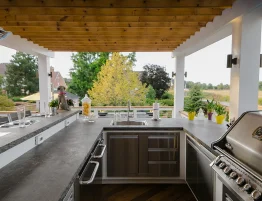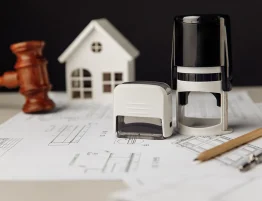
Understanding the Importance of Planning
Every successful home renovation project begins with a well-thought-out plan. When we decide to transform our living spaces, it’s easy to get swept up in the excitement of choosing designs and fixtures. However, the blueprint you lay out before the first hammer is swung plays a pivotal role in ensuring your vision comes to life seamlessly. Here, we’ll walk you through the steps to chart a clear path for your renovation journey.
Set Clear Goals and Priorities
Start by outlining what you want to achieve with your home renovation. Are you looking to increase the resale value of your property, or create a more functional and modern space for your family? By setting clear objectives early on, you’ll be better equipped to make informed decisions as the project progresses.
Determine Your Budget
It’s crucial to establish a realistic budget for your renovation. This involves more than just considering the cost of materials and labor. Remember to factor in permits, potential unseen problems, and a contingency fund. This way, you’re prepared for unforeseen costs without compromising the integrity or quality of your project.
Select the Right Professionals
Your home is one of your most significant investments. It’s vital to entrust its renovation to skilled and reputable professionals. Do thorough research, ask for referrals, and check reviews. Meet with potential contractors and get detailed quotes. The right team will not only bring your vision to life but also ensure that the project adheres to local building codes and standards.
Design with the Future in Mind
While it’s tempting to go with the latest design trends, it’s wise to think long-term. Consider timeless designs that will remain appealing and functional in the years to come. Think about how your family’s needs might evolve and how the renovated space can adapt to those changes.
Secure Necessary Permits
Before any work begins, ensure you have the required permits. While this may seem like a tedious step, it’s essential for legal reasons and to ensure the safety of the work being done. Proper permitting can save you from potential fines and costly redo’s down the line.
Prepare for the Unexpected
Even with meticulous planning, unforeseen challenges can arise during renovations. This could range from discovering mold behind walls to facing supply chain delays. By anticipating these potential hiccups and being flexible, you’ll navigate these challenges more smoothly.
Keep Communication Lines Open
Regular communication with your contractor is pivotal. Schedule weekly check-ins to discuss the project’s progress, raise any concerns, and make necessary adjustments. Being on the same page reduces misunderstandings and ensures the project remains aligned with your vision.
Plan for Daily Life Amidst Renovation
Depending on the scale of your project, your home might be in disarray for a while. Plan how you’ll navigate daily life, whether it’s setting up a temporary kitchen during a remodel or finding accommodation if the disruption is too significant.
Understanding Timelines
When embarking on a home renovation, one of the most common queries we hear is, “How long will it take?” While every project is unique, having a tentative timeline can help manage expectations and ensure everything moves forward cohesively.
Phases of the Renovation
To better understand the timeline, it’s crucial to grasp the phases involved:
Design and Planning: This stage involves conceptualizing the project, finalizing designs, and getting necessary approvals. Depending on complexity, it can take anywhere from a few weeks to a couple of months.
Demolition: If the renovation involves removing existing structures or interiors, this phase can take a week or more, depending on the project’s scale.
Structural Work: For projects that require foundational or structural changes, this step can be the most time-consuming. It’s imperative to ensure that everything is structurally sound before moving forward.
Utilities: Installing or updating electrical, plumbing, and HVAC systems follow. Professional installation ensures they function efficiently and safely.
Interior Finishing: This is where your project truly starts to resemble the final product. Drywall, painting, flooring, and installing fixtures are part of this phase.
Final Touches: The last step involves landscaping, cleaning, and any other finishing touches to make your space ready for use.
Quality Over Speed
While it’s understandable to want your renovation completed promptly, it’s essential to prioritize quality. Rushing through processes can lead to oversight and mistakes that might be costly to rectify in the long run.
Being Proactive
There are certain steps homeowners can take to ensure the project remains on track:
Early Decision Making: The sooner decisions are made regarding fixtures, finishes, and colors, the smoother the process will be.
Stay Engaged: Be available for regular updates and to make decisions when needed. This prevents unnecessary delays and keeps the project on schedule.
The Rewards of Patience
While the renovation process requires patience, the results are undeniably worth the wait. A successfully completed project not only enhances the aesthetic appeal of your space but also its functionality and value.
Conclusion
Embarking on a home renovation is an exciting venture. With proper planning, you can transform your space into one that’s both functional and aesthetically pleasing. Remember, every minute spent in the planning phase can save hours of potential corrections later on. If you ever feel overwhelmed or unsure about a decision, we’re here to guide you.
When it comes to renovations, expertise and experience matter. We invite you to contact Diamond Hill Builders to ensure your project is in the hands of trusted professionals. Together, we can make your dream home a reality.








